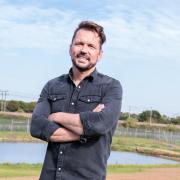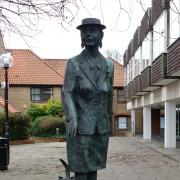Epping is so much more than the last stop on the Central Line. Petra Hornsby meets the volunteers helping to preserve one of Epping’s most treasured and enduring treasures – its forest

Epping is located just 17 miles from London and yet it is far from the urban sprawl that such proximity to the capital might suggest.
With inviting countryside on its doorstep, the fact that it sits on the end of the London Underground’s Central Line makes it perfectly accessible for city workers wanting to head out in search of fresh air, green space and, of course, to visit the town itself.
Like many of the county’s towns, Epping’s early fortunes followed the granting of a market charter by King
Henry III in 1253. The town became renowned for its cattle market, trading in animals and other produce from nearby farms, which brought economic strength to the community until the market closed in 1961.
Epping’s High Street has more than 30 listed buildings and is recognised as a Conservation Area. Important buildings include the Water Tower, built in 1871, which stands as a reminder of the date when clean water and sewage was brought to the town.

The Parish Church of St John the Baptist sits in the town’s centre and, thanks to it being designed by famous Victorian architects Bodley and Garner, it has a distinctive Gothic style.
But perhaps Epping is most famous for its greenest feature – the ancient forest that covers 6,000 acres, stretching from north of the town to London’s Manor Park. Once favoured by royal hunting parties which included King Henry VIII, the forest is now owned by the City of London Corporation which manage the site, protect it from developments and help maintain its historic essence alongside its modern-day use.
The forest is the largest public space in the London area and there is plenty to do there. A network of pathways, footpaths, bridleways and tracks cater for walkers, runners, cyclists and horse riders alike. Two-thirds of the forest is recognised as a designated Site of Special Scientific Interest making it a hot spot for nature lovers too.
Being both a popular hub for recreation and home to many essential natural habitats requires caretaking and managing of the most skilled kind and, although the City of London Corporation is responsible for its maintenance, the task would be a lot harder without the volunteer groups that help preserve the site.

Epping Forest Conservation Volunteers is one such group who meet regularly and follow a programme of projects and tasks that help the forest’s environment cope with the challenges and demands of the modern world, such as changes and developments in agriculture and with urban developments such as road networks.
PR officer for the group, Peter Smith, explains more about the volunteers and their involvement in the forest’s upkeep. ‘I have been involved for six years; like many I had retired and had time on my hands. I have visited the forest and used the space over the years as a teenager and with my own children, and I thought I could give something back. I also like the idea of being active by undertaking tasks such as clearing ground and thinning trees.
‘As a Conservation Area, the upkeep of the forest relies on specialist horticulturists and arborists. Some of our members are very knowledgeable, but for many it is simply a chance to get involved in something away from the office and get some exercise at the same time.’
The group formed in 1977 and has around 90 members, boasting a membership of 180 at its peak. Peter blames the depletion in numbers on the change in Sunday trading laws and the fact that people are working to a greater age before retirement.

However, it seems that those who volunteer, whether retired or not, will find a task that will suit them.
‘There is always a variety of work to do depending on not only existing skills but fitness too. We also have several young people who join us, perhaps studying arboriculture or horticulture, as well as those completing their Duke of Edinburgh Award.’
Maintaining the habitats can be challenging and Peter describes two areas of real concern that the EFCV have worked hard on, and continue to. ‘Keeping the heathlands open is an ongoing task and that means preventing them from becoming enclosed by new forestry. Once, we would have relied on cattle grazing to help keep the heathlands clear but, due to BSE and the increase in cattle-related traffic accidents, the only presence we get, if at all, is livestock corralled by herdsmen, which isn’t as natural or as effective.
‘Also, deer can play a big part in preserving the heathland as they remove the tree saplings. Although green bridges were built across the roads to help encourage the deer to access deep into the forest when the North Circular was widened at South Woodford, this hasn’t been the case as the deer, wary of the roads, tend to remain in the north-west corner.’

The presence of bogs is also vital to the forest as they host rare forms of flora and fauna. Again, the lack of grazing animals has meant that the group must work hard to cut back encroaching trees that can suck the life out of the bogs. With several tasks crying out for attention, how does the group work out its programme?
Peter says: ‘We work closely with the City of London Corporation and negotiate a programme of tasks with them, sometimes on specific requests.’
The group meets at The Warren in Loughton on most Sundays and once a month they meet for a Tuesday task.
‘What I enjoy most is the drama and excitement of seeing a really big tree being sawn down or getting stuck in a pond and having to be rescued by fellow volunteers!’ adds Peter.
‘I love being outdoors in all elements and building shelters to keep dry or building bonfires not only to burn the cuttings but to keep warm, and the sense of working for a purpose.’
With such enthusiastic volunteers dedicating themselves to its conservation, it would appear the ancient forest that is synonymous with Epping is in very safe hands.
_________________



























